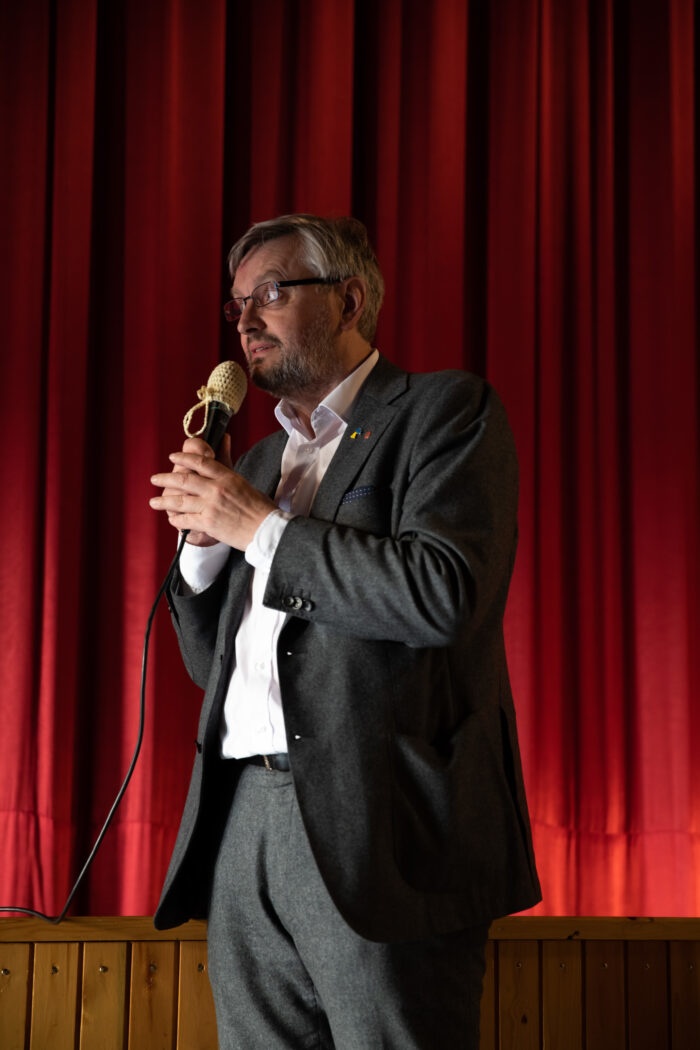At the Thursday’s Morning Discussion we heard the award-winning Ukrainian director Sergei Loznitsa who started his career with short films and documentaries but is also known for his long fiction films. The director studied at one of the best film schools at the time and appreciates wide knowledge of art history and artistic expression. He also believes that the serious approach of the school, which moved on a conceptual level, helped him become the director and artist he is today.
In addition to cinema, the discussion dealt with political and social issues that Loznitsa largely focuses on especially in his later works. The director talked about his youth in Kyiv and his experiences with the humiliating Soviet system. He also commented on the current situation that he had acutely predicted already for example in his fiction film My Joy (2010), which screened at the festival on Thursday.
The “pseudo-documentary” My Joy is a collection of stories that Loznitsa heard while traveling around Russia after film school and making portrait-like short films and documentaries. Even though the stories depict a certain historical moment, they are timeless. “I showed this society where all the social institutions are completely destroyed, and connections between people are also destroyed”, Loznitsa explained.
The discussion also touched upon mathematics and music, two abstract fields which – according to Loznitsa – shed light on the order of the universe. Loznitsa did his first degree on the former one, and it has been in his life since childhood as he comes from a family of mathematicians. Music on the other hand plays an important role in Loznitsa’s films along with the rest of the soundscape.
For example, while talking about his early short films, Loznitsa describes the soundscape of The Halt (2000) in which the passive sounds of sleeping are occasionally drowned in the noise of a passing train. The audience also watched an excerpt from the documentary The Natural History of Destruction (2022) that will be screened at the festival again on Sunday. It is considered the most symphonic of Loznitsa’s works and almost all of the sounds have been created afterwards.
In the early bombing sequence of The Natural History of Destruction we mostly see only flashes of light and according to Loznitsa that puts the viewer’s imagination to work. “For me this is pure cinema”, he says. Like other Loznitsa’s films, The Natural History of Destruction does not have a voiceover as he finds that the viewer cannot focus on the story told by the images if they are being commented on. “What we can do in cinema is to tell a story with images, express everything with images, with the help of sound”, he explains.
On a deserted island the director would take Robert Wiene’s The Cabinet of Dr. Caligari (1920) – one of the first films that defined for him what cinema is all about.
